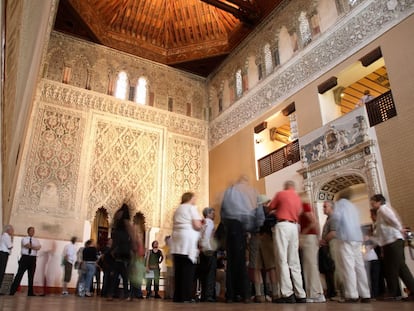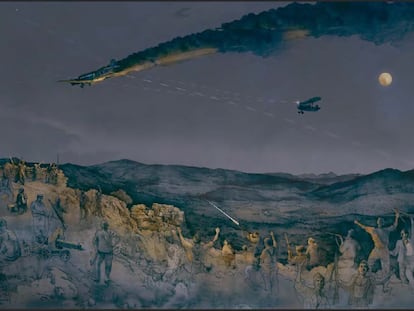Unpublished images of Spanish Civil War Condor Legion found in London flea market
Some 200 photographs depicting Nationalist officers with members of the German Luftwaffe, who were responsible for the bombing of Guernica, have been donated to the Spanish state
John Knowles is a true history buff. And he’s very excited to find out that he, too, is now a part of history. Last spring, instinct led him to pay 35 pounds (about $44) to a woman at a street market in the wealthy London neighborhood of Chiswick. In exchange, he got a handful of cans, containing old 35mm photos. They belonged to the woman’s grandfather — Hans-Henning Erdmann — a German banker who moved to London.
Among dozens of family photos (which he had no interest in), Knowles began carefully examining some pictures that were grouped together in a cardboard box from the German-Belgian company, Agfa.
“I began to see soldiers, in an environment that looked like the desert. I immediately thought of North Africa. I kept looking at the reels until, suddenly, I read an easily-recognizable slogan: No Pasarán (they shall not pass),” Knowles tells EL PAÍS, shortly before delivering all of this photographic material to the Spanish ambassador in the United Kingdom. This phrase was an anti-fascist slogan used by Republicans during the Spanish Civil War, when they were defending a position.
“Immediately, I realized that [these photos were from] the Spanish Civil War… they captivated me. There were many high-ranking German officers. You could tell by their insignia. I did some research, and found that it was easy for many of them to get promoted if they volunteered to fight in Spain.”
Knowles, 55, had come across what were clearly unpublished images of the presence of the German Luftwaffe’s Condor Legion — the air force that Hitler sent his ally, Francisco Franco, to help the Nationalist rebels take power. Above all, however, Hitler had sent Nazi reinforcements to test the barbaric offensive strategies that he would later deploy against civilians during World War II. The bombing of Guernica would become a demonstration of a new type of warfare.
The Basque Children of ‘37 Association — made up of Basque children (and their descendants) who went to the UK in 1937, fleeing the Spanish Civil War — has gone to the Embassy of Spain, in the Belgravia district of London, to witness the delivery of this new historical material.
“We all know of the impact that the Condor Legion had in the Basque Country (an autonomous region of northern Spain), as well as in the atrocity of Guernica. For the descendants of the Basque children of war, this is the recovery of a historical memory that is very much theirs… that’s why everyone has been so emotional,” explains Ambassador José Pascual Marco.
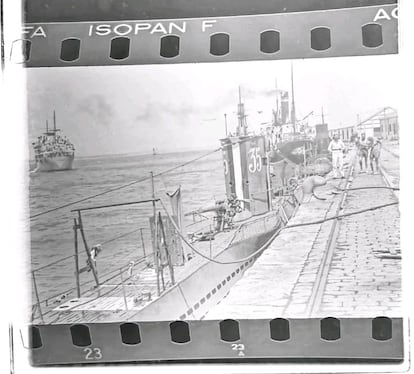
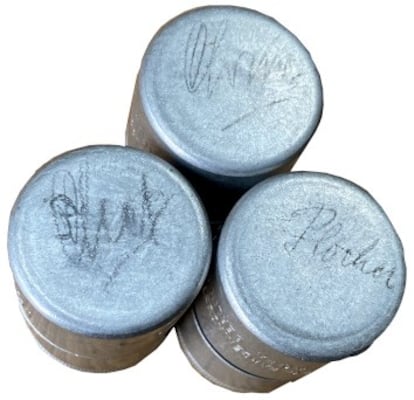
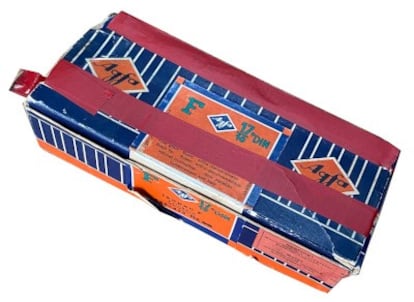
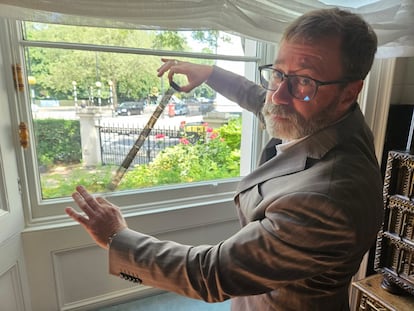
Through Joan María Thòmas, a professor of contemporary history at the University Rovira i Virgili, in southern Catalonia, Knowles was able to contact the Documentation Center of Historical Memory (operating under Spain’s Ministry of Culture) and arrange for the donation of the photographs. There are at least 200 pictures that, over the course of several months, he had identified in a rudimentary way, albeit with admirable dedication. Some of the photos include German officers on a tourist visit to a giant arch in Navarra; images of Nationalist destruction in the city of Belchite; what appears to be the headquarters of the Condor Legion in Burgos; locals assisting German officers, as well as a bored-looking soldier sitting in a latrine. There are also images of a man who is likely Alfredo Kindelán, the head of Franco’s air force, standing with some of his German comrades, along with a picture of a U-boat somewhere off the coast of Spain.
“This was around the time when it started to be easy to carry portable cameras. Everything suggests that this group of high-ranking officers had one that they passed around… they took photos of each other, talking with important Spanish (rebel) leaders, or leaning against some of their planes. It’s clear that this isn’t the work of a professional photographer, nor even that of a skilled amateur. Some images are poorly-focused — the composition of the shots is very poor,” explains Knowles, who hails from Yorkshire. “Some of the individuals posing look tired, bored, almost on vacation,” he notes. Some of the cans containing the rolls of photos reveal an inscription scratched into the metal that reads “Plocher.” Knowles thinks that this must be the surname of the German officer who was compiling the material over the course of several months. Hermann Plocher was the Condor Legion’s chief-of-staff, starting from October 1, 1937.
“I would have liked the young woman from whom I bought this material to be here today, at the delivery ceremony. But I haven’t been able to find her again. I only have the last name that was registered on the postal envelope that contained some of the negatives,” the amateur historian says. From the little he was able to trace from that name, he learned that the German family who had preserved the photos for so many years had been able to rebuild their lives and prosper in British territory. Meanwhile, the younger generations probably didn’t even know that something called the Condor Legion had played such a key role in modern Spanish history.
Knowles has written a short essay about his adventure. He’s fond of quoting German-Jewish philosopher Walter Benjamin, who lamented that technology was unable to “capture” the “aura of the characters.” The photos that he has contributed to rescuing, however, will still serve to help us better understand an era that we are constantly rediscovering.
Sign up for our weekly newsletter to get more English-language news coverage from EL PAÍS USA Edition
Tu suscripción se está usando en otro dispositivo
¿Quieres añadir otro usuario a tu suscripción?
Si continúas leyendo en este dispositivo, no se podrá leer en el otro.
FlechaTu suscripción se está usando en otro dispositivo y solo puedes acceder a EL PAÍS desde un dispositivo a la vez.
Si quieres compartir tu cuenta, cambia tu suscripción a la modalidad Premium, así podrás añadir otro usuario. Cada uno accederá con su propia cuenta de email, lo que os permitirá personalizar vuestra experiencia en EL PAÍS.
¿Tienes una suscripción de empresa? Accede aquí para contratar más cuentas.
En el caso de no saber quién está usando tu cuenta, te recomendamos cambiar tu contraseña aquí.
Si decides continuar compartiendo tu cuenta, este mensaje se mostrará en tu dispositivo y en el de la otra persona que está usando tu cuenta de forma indefinida, afectando a tu experiencia de lectura. Puedes consultar aquí los términos y condiciones de la suscripción digital.
More information
Archived In
Últimas noticias
Christmas loses its festive spirit: ICE fears cast shadow over religious celebrations
All the effects of gentrification in one corner of Mexico’s Colonia Roma
Palestinian reporter Youmna El Sayed: ‘My family told me I had to choose between being a journalist or a mother’
Russell Tovey: ‘I was advised many times not to come out, I don’t think there was many people who’d done that — and I feel really proud that I’m one of those that did’
Most viewed
- Families demand repatriation of bodies of Colombians who died in Ukraine: ‘This war is a slaughterhouse for foreigners’
- The low-cost creative revolution: How technology is making art accessible to everyone
- Liset Menéndez de la Prida, neuroscientist: ‘It’s not normal to constantly seek pleasure; it’s important to be bored, to be calm’
- Christian Louboutin: ‘Young people don’t want to be like their parents. And if their parents wear sneakers, they’re going to look for something else’
- ‘El Limones’ and the growing union disguise of Mexican organized crime

